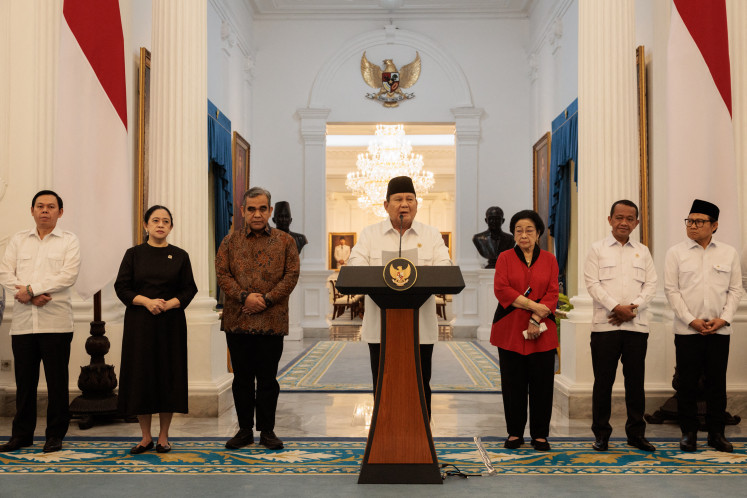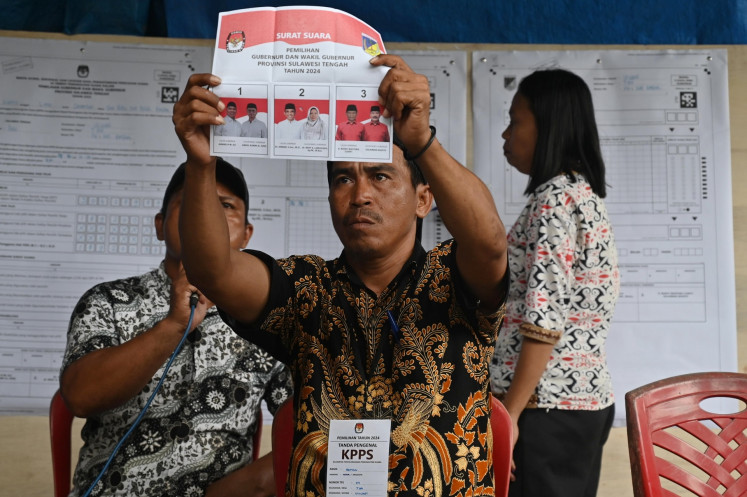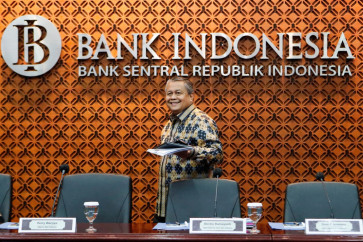Popular Reads
Top Results
Can't find what you're looking for?
View all search resultsPopular Reads
Top Results
Can't find what you're looking for?
View all search resultsAnalysis: BI burden-sharing scheme with the government draws scrutiny
Change text size
Gift Premium Articles
to Anyone
B
ank Indonesia (BI) and the Finance Ministry have announced another burden-sharing arrangement through Indonesian government securities (SBN), a mechanism typically reserved for easing the government’s fiscal burden during crises, even though no national crisis has been declared. Part of the proceeds will finance priority programs, continuing the central bank’s financial backing of government initiatives. Economists warn, however, that the policy risks undermining economic stability and BI’s independence.
In a meeting with the Regional Representative Council (DPD) Committee IV and the Finance Ministry, BI disclosed that it had purchased Rp 198 trillion (US$12.06 billion) worth of SBN as of early September 2025, including Rp 12 trillion since Aug. 19. A portion of these funds will support Asta Cita programs such as the Three Million Houses and the Red-and-White Village Cooperatives (KMP). The burden-sharing scheme, first introduced during Indonesia’s COVID-19 response in 2020, aims to reduce the government’s financing burden.
BI explained that the scheme works by offsetting the funding costs of the SBNs for the housing and KMP programs with interest earned on state deposits in domestic banks. The net result is then split between BI and the government, implemented through an increase in the government’s deposit interest rate at BI. For the housing program, the effective burden borne by BI and the Finance Ministry is 2.9 percent each, while for the Red-and-White Village Cooperatives (KMP) program, the effective interest rate is 2.15 percent.
BI stressed that the arrangement complies with Law No. 4/2023 on Financial Sector Development and Strengthening (P2SK), since the SBNs were acquired on the secondary market. Article 36A of the P2SK Law restricts BI’s primary market purchases of long-term SBNs to circumstances where a national crisis has been declared by the president, based on a recommendation from the Financial System Stability Committee (KSSK), of which BI is a member. Meanwhile, BI’s purchases of short-term treasury bills (SPN) in the primary market—unrestricted under the law—reached Rp 48.26 trillion as of Aug. 19.
Of BI’s SBN purchases this year, around Rp 150 trillion have been used for debt-switching from maturing to newer bonds. BI has also allocated Rp 384 trillion in macroprudential liquidity incentives and cut its outstanding Rupiah Securities by Rp 208 trillion as of August. An International Monetary Fund (IMF) study estimated that BI’s burden-sharing costs for 2023–2025 could reach Rp 164 trillion under a hawkish scenario of a 6 percent benchmark rate by the end of 2025, given the near-zero coupon rates of SBNs involved in the scheme.
Experts cautioned that the arrangement could be seen by markets as fiscal dominance over monetary authority. BI’s extensive bond purchases have also thinned market depth, impaired price discovery, heightened volatility, and raised the risk of capital outflows, while adding inflationary pressure and weakening the rupiah. Moreover, BI’s independence is further under strain due to its ongoing corporate social responsibility fund corruption case.
BI’s monetary policy flexibility could be further constrained by the costs of this scheme, in addition to its already expansionary stance. Critics argue that the central bank is straying beyond its core mandate of monetary stability, potentially eroding its independence. Proposals to add employment creation to BI’s mandate—similar to the U.S. Federal Reserve’s dual mandate—could be considered, but only with clear safeguards to preserve BI’s credibility.



















